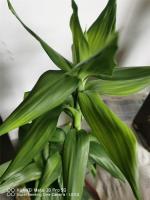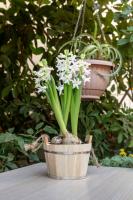When Do You Plant Tomatoes in South Carolina?
Tomatoes are a popular vegetable to grow in South Carolina. They are easy to grow and provide a bountiful harvest with very little effort. However, the timing of planting tomatoes in South Carolina is crucial to their success. In this article, we will discuss the best time to plant tomatoes in South Carolina and some tips for growing healthy and delicious tomatoes.
Weather and Climate in South Carolina
The first thing to consider before planting tomatoes in South Carolina is the weather and climate. South Carolina has a humid subtropical climate, which means the summers are hot and humid, and the winters are mild. The state has an average annual temperature of around 62°F and an average annual precipitation of around 48 inches.
These climatic conditions are ideal for growing tomatoes, but it is important to plant them at the right time to get the best results. Tomatoes need warm soil and air temperatures to germinate and grow properly, so timing is everything.
When to Plant Tomatoes in South Carolina
In South Carolina, the best time to plant tomatoes is in the spring, typically between March and May. Planting during this period ensures that the soil and air temperatures are warm enough for the seeds to germinate and the plants to establish themselves.
If you live in the coastal areas of South Carolina or in the Lowcountry, you can start planting tomatoes as early as mid-March. However, if you live in the Upstate or the Piedmont regions, it is recommended to wait until late March or early April, as the temperatures might still be too cold in early March.
You can continue to plant tomatoes until late May, but the earlier you plant, the better your harvest will be. It is also important to choose the right type of tomato for your region and soil type.
Choosing the Right Type of Tomato
South Carolina has a diverse terrain, and different regions have different soil types and temperatures. Choosing the right type of tomato for your region can help ensure a healthy and bountiful harvest.
If you live in a region with sandy soil like the coastal areas, you should choose tomatoes that are resistant to nematodes, such as Celebrity, Better Boy or Amelia. If you live in the Upstate or Piedmont areas, which have heavier clay soil, you should choose tomatoes that are resistant to fusarium and verticillium wilt, such as Roma, San Marzano or Rutgers.
It is also important to consider the size and type of tomato you want to grow. Determinate tomatoes, which are compact and produce a single harvest, are ideal for small gardens and containers. Indeterminate tomatoes, which are sprawling and produce fruit throughout the season, are ideal for large gardens and spaces.
Tips for Growing Tomatoes in South Carolina
Once you have chosen the right type of tomato for your region and soil type, there are a few tips you can follow to ensure a healthy and bountiful harvest:
Plant tomatoes in a sunny location with good drainage.
Amend the soil with compost or aged manure before planting.
Stake or cage the plants to provide support as they grow.
Water regularly and deeply, especially during dry spells.
Fertilize with a balanced fertilizer every 4-6 weeks.
Check regularly for pests and diseases and treat promptly.
Harvest tomatoes when they are fully ripe for the best flavor.
Conclusion
Tomatoes are a popular vegetable to grow in South Carolina, but the timing of planting is crucial to their success. Planting tomatoes in the spring, between March and May, is the best time to ensure warm soil and air temperatures for germination and growth. Choosing the right type of tomato for your region and soil type, and following some basic tips, can help ensure a healthy and bountiful harvest.

 how many times do yo...
how many times do yo... how many planted tre...
how many planted tre... how many pine trees ...
how many pine trees ... how many pecan trees...
how many pecan trees... how many plants comp...
how many plants comp... how many plants can ...
how many plants can ... how many plants and ...
how many plants and ... how many pepper plan...
how many pepper plan...

































